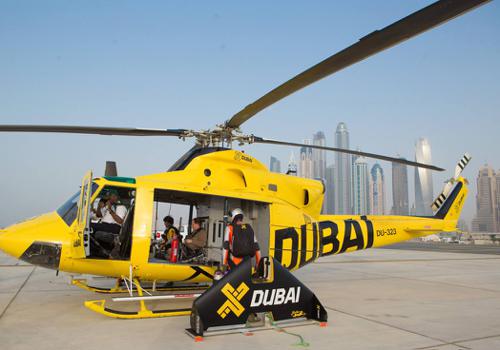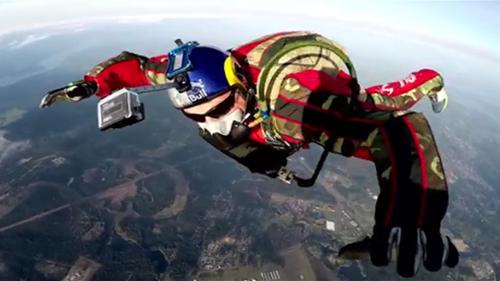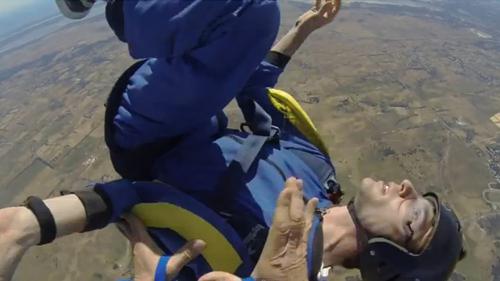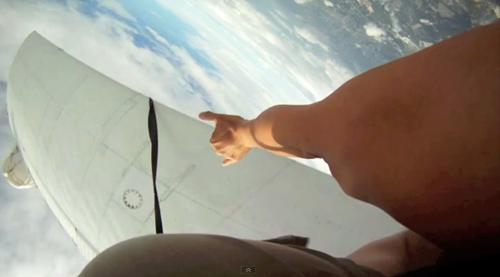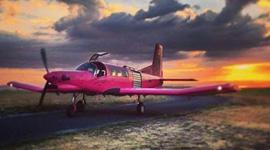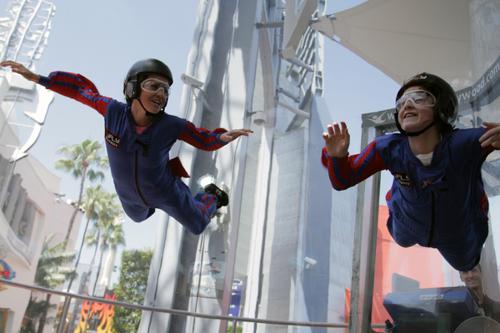The Evolution of Jetman Dubai
Image by Max Haim
There's been a ton of social media hype this week about the new Jetman Dubai video released by XDubai. The video, available in 4k quality, has already amassed over 2 million views on youtube within 48 hours of release. But what is the story behind Jetman and will this venture see an evolution to methods of human flight?
Back in the mid-2000s, Yves Rossy of Switzerland set history by becoming the first person to fly with the use of a jet-propelled wing. A step that closed some of the gap between wingsuit flying and aircraft piloting. Before venturing into jet-propelled human flight, Rossy was both an air force and commercial pilot, serving in the Swiss Air Force before flying for both Swissair and Swiss International Airlines.
Rossy first began skydiving, then looking to wingsuiting and skysurfing in order to maximize his flight time, but neither of these were able to satisfy what it is he was after. Rossy didn't want to be freefalling, but rather flying, with as little restrictions and as much freedom and agility as possible, while still ensuring the longest possible flight time. This is what then prompted him to begin his development on the original jet propelled wing.
After developing an inflated wing design in order to achieve more flight time, Rossy then began to design the first jet propelled wing, which was flown in 2004. This first propulsion based wing was only a dual jet propultion system, which allowed him to maintain flight level. In 2006 he changed the design to use 4 jets instead of the original 2. This change allowed Rossy to go from merely being able to maintain flight level, to being able to ascend while in flight too.
Since 2006, Yves Rossy, the Jetman has flown in several high profile flights and accomplished impressive achievements. Rossy is now primarily flying in Dubai, with Skydive Dubai seemingly being the sole sponsor of the venture at this point in time. Teaming up with Skydive Dubai has meant that Rossy has been able to get some crazy video footage of his latest flights, with Skydive Dubai being notorious for their video production quality.
The Next Chapter
In early May, Jetman Dubai began hinting at the announcement of a new development in the Jetman Dubai project and after a few social media teasers, a video was released on the 11th May which announced that Yves would no longer be flying solo. Instead, he would be joined in the air by Vince Reffet, a well known skydiver and BASE jumper. Vince was born into a family of skydivers and did his first jump at just 14 years old. Now just in his 30s, Vince already boasts an impressive tally of over 13 000 jumps.
The French protege is specifically recognized for his freeflying skills, and is best known for his position on the Soul Flyers team.
The training of Vince by Yves Rossy has opened up far more opportunities for the Jetman Dubai project, with the most noteable being that of formation in flight. According to the Jetman Dubai website, Yves began training Vince as early as in 2009.
The visuals of these two individuals flying together are so outstanding that it has many calling fake on the videos. However the truth is that what you see is the result of some extremely skilled pilots, working together to create something majestic.
The Jetman Wing
The Jetman Dubai wings weigh in at a total of 55kg with a wing span of 2 meters, and contain 4 Jetcat P200 engines. Speeds on descent can reach 300km/h, while ascent speeds clock in at around 180km/h. The flight will typically last for between 6 and 13 minutes. Flight begins with an exit, most commonly by helicopter, and when the flight time is over, a parachute is deployed for landing.
A question on a lot of people's minds seem to be whether or not this type of jet propulsion system could work its way into the public. Though it seems that those keen to do some jet flying of their own should not hold their breath, apart from a large budget, it's difficult to see any situation in the near future whereby the safety aspect associated with these wings will allow for public use. In the mean time however, we can sit back, watch and enjoy.
Who knows what is next for the now Jetman Dubai duo, but we can't wait to see it...

